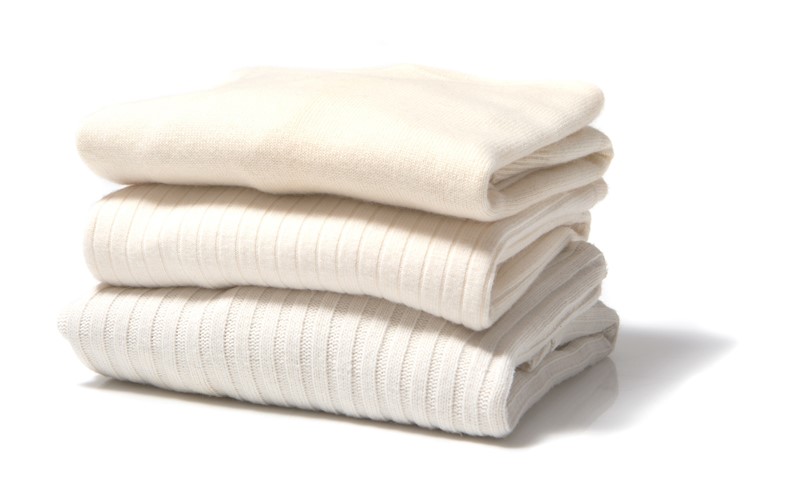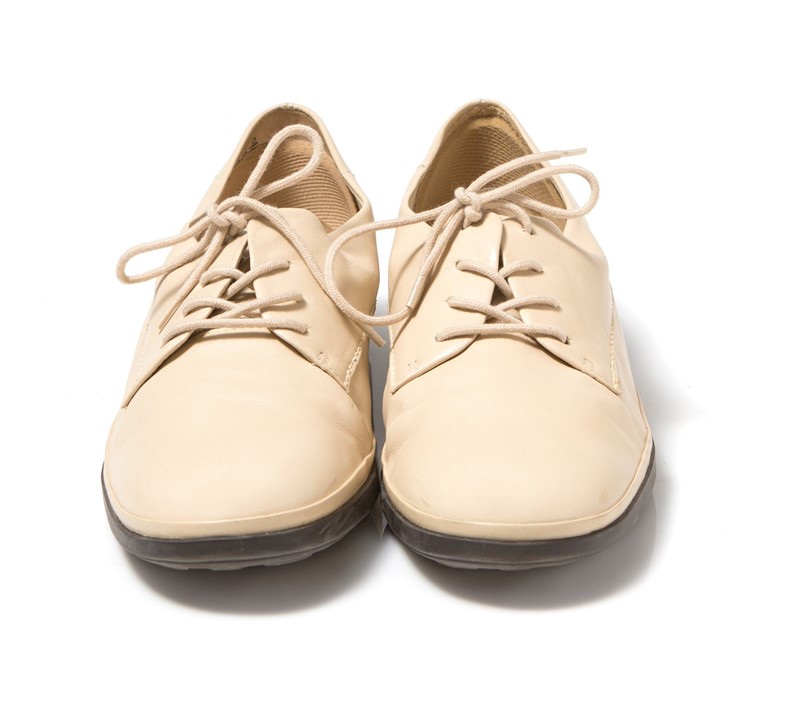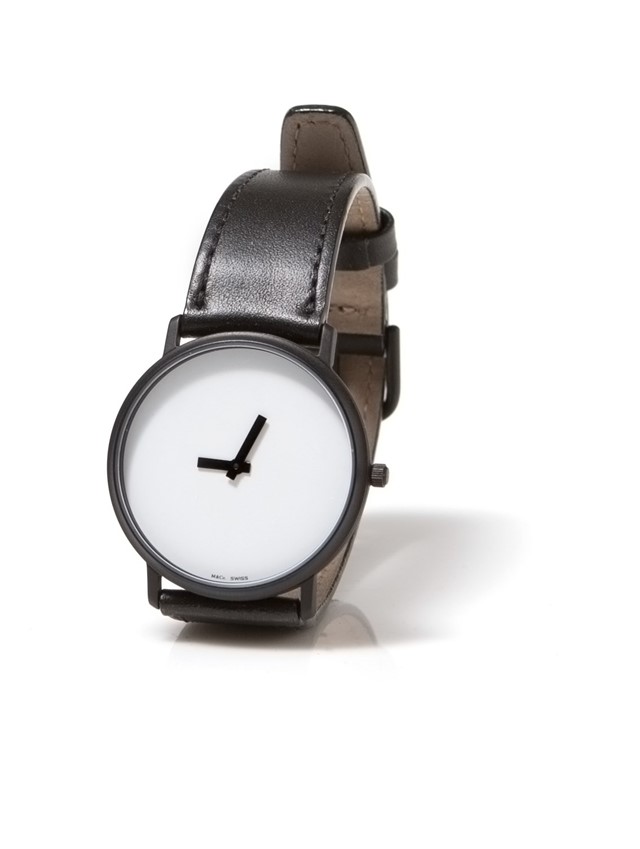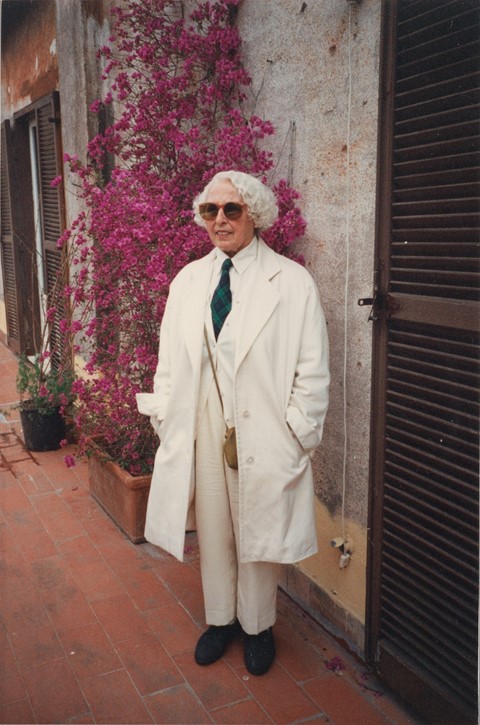When Sara Berman left her husband and decided she would only wear white, it became a manifesto of sorts about the life she wanted to live – so demonstrates a new exhibition at New York’s Metropolitan Museum
Sara Berman is 74, and she’s standing on a terrace somewhere in Rome, hands in pockets. Pink bougainvillea climbs behind her, making her white hair appear even brighter. She’s wearing all white of course, because that’s the only colour she ever wore. The text accompanying this photograph, currently on display at The Metropolitan Museum in New York as part of the exhibition Sara Berman’s Closet reads like a diary entry or screenplay: “Sara, who speaks no Italian walks to the market in Campo de’ Fiori and returns with veal. She pounds it paper thin and makes schnitzel.” This is the story of an ordinary émigré New Yorker, her rather remarkable closet and how her clothes reveal the life she chose for herself.
It’s thanks to this meticulous recreation of her modest walk-in closet at The Metropolitan that we even know about Berman. A standalone art piece that first appeared in Lower Manhattan’s incongruous and tiny Mmuseumm gallery, it was created by Maira Kalman and Alex Kalman (her daughter and grandson) and it reveals regimented piles of knitwear, lingerie, t-shirts and trousers in shades of cream, ivory and ecru. A stack of personal letters, household linens and luggage all have their place too, but it’s the absence of bright colours and the order of the clothes themselves that’s startling. It’s peaceful to imagine the freedom a wardrobe like this could afford – to be able to leave at a moment’s notice.
Sara Berman was born in Belarus in 1920, before living in Tel Aviv and eventually the Bronx, New York where she and her husband settled to raise their children. What’s significant about Sara Berman’s Closet though, is that it represents her wardrobe at a time when she was very much her own person.

Seminal Moments
In 1982 Sara left her husband of 38 years, along with her money and most of her possessions. “Before her divorce she had more items (of clothing) and they carried in colour,” Alex Kalman, told AnOther via email. “But afterwards she decided to only wear white and keep it in perfect order.” Packing a single suitcase, she moved into a studio apartment in Greenwich Village; finally, a room of her own. Her carefully selected items were stowed into the closet, the shades of white perhaps nudged at her childhood memories of the sun-bleached laundry that hung from lines in Palestine, where she grew up. There were other new freedoms, like watching the same TV programme each night; Jeopardy, at 7pm. Perhaps best of all, there was a view of the Empire State Building from her window.

Defining Features
A creature of habit, Sara liked to wear Easy Spirit lace-up shoes, which she bought again and again, white turtlenecks, and Chanel No. 5. There were three black M&Co wristwatches that had belonged to her son-in-law, Tibor Kalman. After Kalman died, she started wearing them all at once, the hands set to the time in New York, Tel Aviv and Belarus respectively. How did she keep her clothes so pristine? “She cleaned them with care,” Alex Kalman writes, “she did not live a life that caused them to get dirty.” But Sara’s closet wasn’t a private place – her grandchildren were welcome to poke around. It was a place of love and care, rather than rules. “She was generous, kind and funny,” Kalman says. “She would come over to our house to help put our things in order.” It’s that need for giving objects a home that interested both Alex and his mother, Maira: “We felt it captured the narrative of a life and the pursuit of order, which is a universal idea.”

She’s an AnOther Woman because…
Looking at Sara Berman’s carefully chosen and much-loved clothes, it’s plain that renewal can happen at any time. Reinvention is a game for anybody, regardless of age. We don’t make decisions in youth that we must live by until the end, and there’s a great comfort in learning about a supposedly ‘ordinary’ woman who turned to order and minimalism in later life, to guide exactly who she wanted to be.

Sara Berman’s Closet is on display at The Metropolitan Museum, New York until November 26, 2017. A biographical book of the same name, written by Maira Kalman and Alex Kalman, will be published by Harper Design in 2018.
